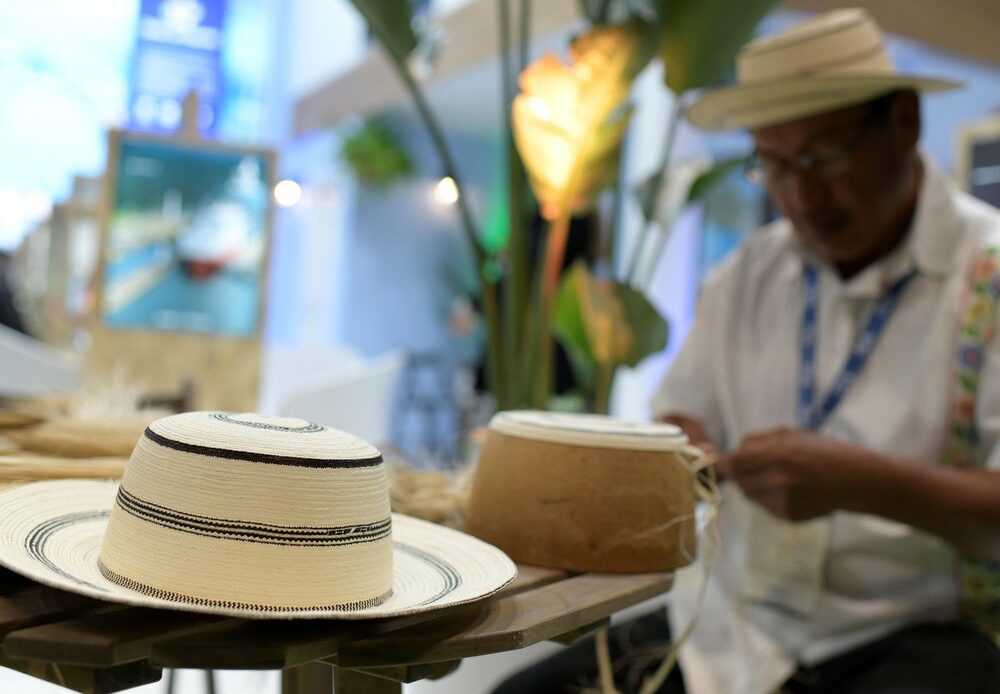The pinta’o originated in the province of Coclé southwest of Panama City, where the hats are still made today.
Gabriel Bouys/Getty Images
The Panama hat is infamously misnamed. The handmade straw headgear actually hails from Ecuador. Construction workers building the Panama Canal wore the hats, though, as their wide brims protected them from the harsh hot sun. In 1906, President Theodore Roosevelt inspected the construction of the canal in a white linen suit topped off with one of the Ecuadorian hats. Photos of Roosevelt unintentionally launched a fashion trend, and the name stuck.
The real Panama hat is the sombrero pintando (“painted hat”), also known as the pinta’o.
The pinta’o originated in the province of Coclé southwest of Panama City, where the hats are still made today. Like the Panama hat, the pinta’o is also handwoven with natural fibers, but it is defined by intricate dark patterns that are woven throughout the hat. Exquisite artisanship is required to craft the sombrero from the fibers of several local plants—bellota for the white part of the hat, chonta for decoration, chisná for dying fiber, junco to make the ornate tarco stripe, and pita for stitching the hat. The bellota fibers are boiled before being sun-dried for about a week, as the whiter the fiber, the more valuable the hat. After the fiber has dried to the desired shade, it’s woven into braids. To form the hat, braids are wrapped around a wooden block and carefully sewn together by hand. Intricate geometric motifs—straight lines, waves and zig-zags—are formed from bands of chonta fiber dyed with chisná leaves. The design creates the appearance of a “painted hat.”
“The pinta’o tradition goes back 200 years,” says Marelys Montero de Monteza, artisan coordinator of Coclé-Ministry of Culture, which works on preserving and conserving the country’s cultural heritage through the promotion of art and culture. “The hat highlights techniques, ancestral expressions, plant care and creativity in the designs that have been transmitted from generation to generation. It’s an important cultural motif that’s ingrained with the customs of the people and a symbol of pride for any Panamanian.”
The pinta’o hat is part of…
Click Here to Read the Full Original Article at Travel | smithsonianmag.com…
